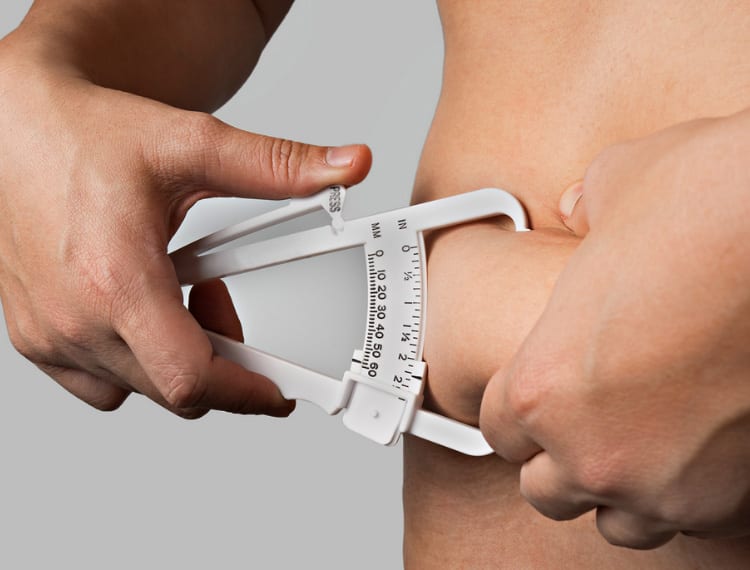Does Liposuction Remove Fat Forever?
Liposuction, a renowned cosmetic surgery, has gained immense popularity over the years. With the promise of a sculpted physique and the removal of stubborn fat pockets, it’s no wonder many are drawn to this procedure. But a lingering question remains: Does liposuction truly remove fat forever? Dive into this comprehensive guide as we unravel the truth behind this sought-after procedure.Understanding the Basics of Liposuction
Before delving into the crux of the matter, it’s essential to grasp the fundamental concept of liposuction. At its core, liposuction is a cosmetic procedure designed to remove excess fat from specific areas of the body. It’s not a magic bullet for weight loss but rather a method to enhance one’s body contours. The procedure targets those pesky fat deposits that seem impervious to even the most rigorous diet and exercise routines.
For those considering liposuction, it’s crucial to set realistic expectations. While the surgery does remove fat cells permanently, it doesn’t mean you’re immune to future weight gain. The body still retains some fat cells post-surgery, and these can expand if one gains weight. Thus, the key to long-lasting results lies in maintaining a balanced lifestyle post-procedure.
Learn more about liposuction and its benefits here.
Why Do People Opt for Liposuction?
The allure of liposuction isn’t solely about vanity. Many individuals turn to this procedure for a myriad of reasons:
- Targeted Fat Reduction: Unlike general weight loss, which reduces fat uniformly across the body, liposuction zeroes in on specific areas, offering a more tailored approach.
- Boosted Confidence: Achieving a desired body shape can significantly enhance one’s self-esteem and body image.
- Post-Weight Loss Contouring: For those who’ve undergone significant weight loss, liposuction can help refine and sculpt the body, removing any lingering fat pockets.
- Non-Responsive Fat Deposits: Some fat deposits remain stubborn despite dedicated efforts. Liposuction offers a solution to these resistant areas.
Debunking Common Liposuction Myths
With its rising popularity, liposuction has also become the subject of numerous myths and misconceptions. Let’s set the record straight:
- Myth 1: Liposuction is a weight loss solution.
- Truth: As mentioned earlier, liposuction is a body contouring procedure, not a weight loss treatment. It’s essential to differentiate between the two to ensure you’re seeking the procedure for the right reasons.
- Myth 2: The fat removed through liposuction can return.
- Truth: The fat cells removed during liposuction are gone for good. However, the remaining fat cells can expand with weight gain, which is why post-procedure lifestyle choices are pivotal.
- Myth 3: Liposuction can remove cellulite.
- Truth: Liposuction targets fat deposits beneath the skin but doesn’t directly address skin texture or cellulite.
Exploring the Different Types of Liposuction
Liposuction, while a singular term, encompasses a range of techniques and methods. Each type offers unique benefits, and the best choice often depends on the individual’s needs, the area being Tumescent Liposuction
Arguably the most prevalent form of liposuction, tumescent liposuction is lauded for its safety and effectiveness. The procedure begins with the injection of a solution comprising saline, lidocaine, and epinephrine into the target area. This concoction not only numbs the region but also minimizes bleeding during the procedure. Once the area is prepped, a thin tube, known as a cannula, is inserted to suction out the fat cells.
Benefits:
- Reduced bleeding and bruising.
- Local anesthesia reduces risks associated with general anesthesia.
- Effective for larger areas of fat removal.
Laser-Assisted Liposuction (LAL)
Harnessing the power of laser energy, LAL is a modern take on traditional liposuction. The laser works by liquefying the fat cells, making them easier to suction out. This method can be particularly effective for areas with denser fat or locations that require more precision.
Benefits:
- Minimally invasive with smaller incisions.
- The laser can stimulate collagen production, potentially improving skin elasticity.
- Reduced recovery time compared to some traditional methods.
Ultrasound-Assisted Liposuction (UAL)
Similar in concept to LAL, UAL uses ultrasound waves to break down and liquefy fat cells before they are suctioned out. This technique can be especially beneficial for fibrous areas of the body, such as the male breast or the upper back.
Benefits:
- Effective in targeting fibrous fat areas.
- Can be used in conjunction with other liposuction methods.
- Potential for smoother results in specific body areas.
Power-Assisted Liposuction (PAL)
PAL stands out due to its use of a vibrating cannula. This vibration aids in breaking up the fat cells, making the removal process more efficient. It’s particularly useful in areas where fat is more challenging to extract.
Benefits:
- Faster procedure compared to some traditional methods.
- Reduced surgeon fatigue, ensuring consistent results.
- Can lead to smoother outcomes in certain regions.
Discover more about these liposuction techniques and their benefits.
Factors to Consider When Choosing a Liposuction Method
With multiple liposuction techniques available, making a choice can seem daunting. However, considering the following factors can guide your decision:
- Area of Treatment: Some methods are better suited for specific body parts. For instance, UAL might be preferable for fibrous areas, while LAL could be ideal for more delicate regions.
- Surgeon’s Expertise: Always consult with a qualified surgeon. Their experience and familiarity with a particular method can influence the outcome.
- Recovery Time: Depending on your lifestyle and commitments, you might prefer a method with a shorter recovery period.
- Desired Results: Discuss your expectations with your surgeon. They can recommend a technique that aligns with your goals.
The Post-Liposuction Journey: Recovery, Risks, and Results
Having explored the intricacies of liposuction and its various techniques, it’s equally vital to understand what comes after the procedure. From recovery timelines to potential risks and maintaining results, this section offers a holistic view of the post-liposuction journey.
Recovery: What to Expect
The recovery process post-liposuction largely depends on the technique used and the individual’s overall health. However, some general guidelines and expectations include:
- Immediate Aftermath: Patients might experience swelling, bruising, and mild pain in the treated areas. Surgeons often prescribe pain relievers and recommend wearing compression garments to minimize swelling.
- Activity Levels: While light activities can be resumed within a few days, strenuous exercises and heavy lifting should be avoided for at least 2-4 weeks.
- Follow-up Visits: Regular check-ins with the surgeon are crucial to monitor healing and address any concerns.
- Final Results: While some results are visible immediately, the final outcome typically manifests between 3-6 months post-procedure, once the swelling has completely subsided.
Learn more about the recovery process and post-operative care here.
Potential Risks and Complications
Like any surgical procedure, liposuction comes with its set of potential risks. While complications are rare, especially when the surgery is performed by a qualified professional, it’s essential to be informed:
- Infection: Though uncommon, infections can occur post-surgery and require prompt treatment.
- Scarring: Small scars might form at the incision sites, but they usually fade over time.
- Irregular Contours: Uneven fat removal can lead to bumpy or wavy skin appearances.
- Fluid Accumulation: In some cases, temporary pockets of fluid, known as seromas, can form.
- Numbness: Temporary numbness in the treated area is possible but usually resolves on its own.
It’s crucial to discuss any concerns with your surgeon and ensure you understand the potential risks before undergoing the procedure.
Maintaining Your Liposuction Results
While liposuction offers permanent fat cell removal, maintaining the results requires effort and commitment:
- Balanced Diet: Adopting a healthy diet ensures you don’t gain excessive weight, which can affect the surgery’s results.
- Regular Exercise: Engaging in regular physical activity helps maintain body contours and overall health.
- Avoid Rapid Weight Fluctuations: Significant weight gains or losses can alter the appearance of the treated areas.
- Stay Hydrated: Drinking ample water supports skin elasticity and overall well-being.
Conclusion
Liposuction stands as a testament to medical advancements, offering individuals the chance to sculpt and refine their bodies. While the procedure promises permanent fat cell removal, the onus of maintaining the results rests on the individual. A balanced lifestyle, coupled with informed choices, can ensure the benefits of liposuction are enjoyed for years to come.
Considering liposuction? Reach out to our experts at Plastic Surgery Turkey Group and embark on your transformative journey today.


















Follow Us